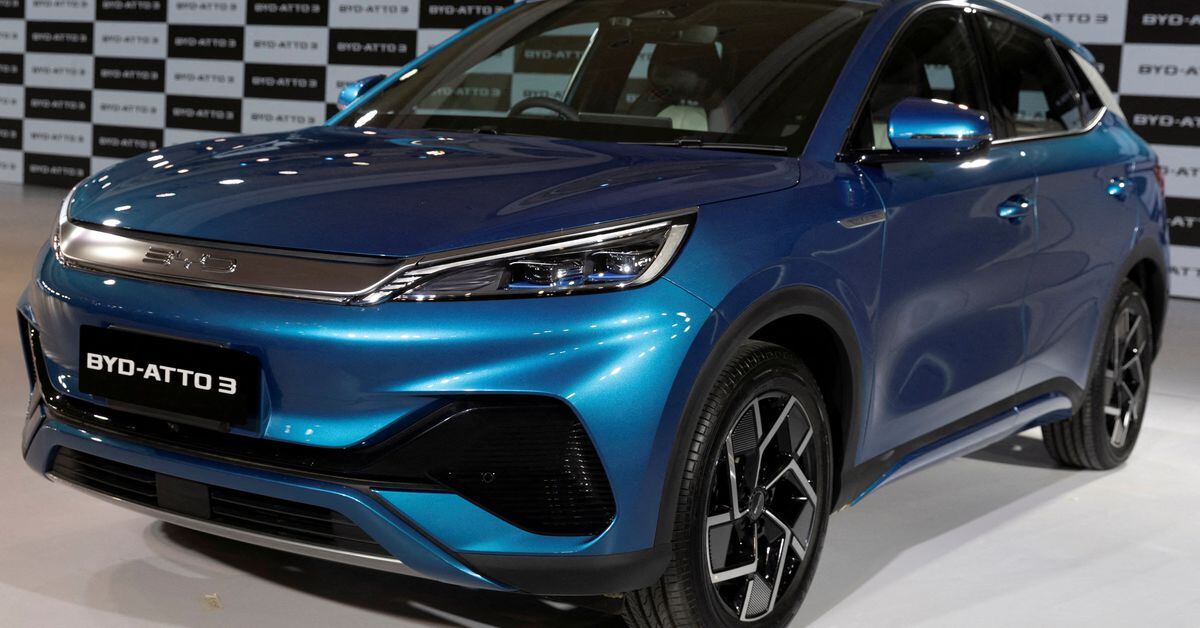China’s BYD Bidding to Make EV Breakthrough in Japan
October 8, 2022
Japan’s car market is notoriously insular but BYD is banking on its buses, batteries and brand recognition to help it stake a claim
Chinese electric vehicle builder BYD has set its sights on breaking into one of the world’s toughest auto markets, and one still seen as a bastion of fossil fuel power – Japan.
Having pipped Tesla in worldwide shipments in the first half of the year, the freewheeling Chinese giant, whose deliveries nearly tripled to more than 811,200 EVs in the first seven months, has now fixed its crosshairs on a new target. But it won’t be easy.
“Japan is a big market but is its own planet,” warned Zhu Dawei, an auto analyst with Guangzhou-based transport consultancy Way-s. “It’s a market impenetrable unless buyers there warm up to EVs and are willing to try foreign products, a process that takes time.”
Even the vaunted Tesla has been unable to stake a claim in Japan’s somewhat insular market, one that’s unreceptive to new technologies or newcomers.
“If it can grow sales there, then
BYD gets the experience to tap other similar developed markets further afield, like Germany,” said David Zhang, chief of EV research at the Jiangxi Provincial New Energy Technology Institute.
The Chinese EV king, though, is looking to make its move now to take advantage of a big change in Japan’s car market. That’s because of Tokyo’s policy and subsidy initiative to drive out new sales of combustion engine models by 2035
“When legacy brands from Toyota, Honda to Mazda are still limping into the EV era, there’s a huge void to establish a lead,” said Zhang.
For years BYD has long been charting a course to Japan, exporting battery technology and electric buses. BYD founder Wang Chuanfu said he hoped that early presence could translate into brand recognition and sales in the private vehicle market. And BYD debuted three EV models for Japan in July,
But Dr Gregory Laurence, Associate Dean of the
University of Michigan’s School of Management and Center for Japanese Studies, cautioned: “It’s doubtful that Japanese citizens are aware of BYD as a brand name in terms of rechargeable battery technology and/or as a bus manufacturer.
“I cannot tell you the manufacturer of the last several buses I have been on.”
He went on: “The larger question of Japanese trust in Chinese brands suggests that BYD has a difficult road ahead. Consider Huawei, which enjoyed fairly good market penetration in a number of countries – the most recent data I see puts its market share in Japan in the 1.5-2.0% range.”
Laurence added: “In the automotive sector, where Japanese consumers have a lot of confidence in their own homegrown brands, the ability of a foreign manufacturer that does not carry some level of elite/prestige with it to be successful is quite difficult.
“The issue is not whether EV sales can be grown in Japan but whether BYD is the company to do it.”
Hybrids Dominate Japan
Japan’s sales of pure EVs, including those from local brands like Nissan’s Leaf, are minuscule as hybrids dominate roads there. Pure EVs accounted for only 1% of Japan’s overall sales in 2021, and Tesla shipped just 5,200 EVs there last year, seven years after its splashy entry.
Analysts say BYD will first have to reckon with the enduring traction of hybrids in Japan.
“Japan invented hybrids and Japanese buyers love them, so BYD’s rival in the country won’t be Tesla or other EV upstarts but Toyota’s Prius that has been rolling since 1997, even before BYD made its first EV prototype,” Way-s’s Zhu added.
The situation is also compounded by Japan’s 2035 plan that will still permit hybrid sales, more or less mirroring China’s categorisation of hybrids and EVs as New Energy Vehicles.
“Toyota plans to make all its new vehicles hybrid or electric in three years time,” added
Osaka University’s Horii.
“A major portion of new vehicle sales in Japan will be hybrids by then. So, the competition would be not only with Prius, but with all Japanese hybrids. Japanese consumers are generally happy with hybrids so the EV adoption will be slow.”
Toyota, Nissan Invest in Electric
But with BYD poised to disrupt Japan’s stagnant market, its incumbents are not sitting idle.
Toyota, for instance, has committed 8 trillion yen ($69 billion) to electrification up to 2030 and has targeted selling around 3.5 million EVs worldwide by then. That represents around a third of Toyota’s current annual auto deliveries.
And Nissan recently debuted a new, nifty small EV, the Sakura, that costs less (2,333K JPY) than the cheapest of BYD’s three new models poised to enter Japan.
Experts say to win the hearts of discerning Japanese buyers, BYD will have to shrink the size of its models and their price, since about 40% of new car sales in the country belong to the Kei class compact cars that cost less and receive preferential tax treatments. But while cutting prices, BYD must not cut corners.
“Japanese buyers are highly selective and trust Japanese makers’ quality. BYD will need to obtain the trust in quality, durability and practicality,” said Michigan’s Center for Automotive Research President and CEO, Carla Bailo.
Japan’s car market is notoriously insular but BYD is banking on its buses, batteries and brand recognition to help it break through

www.asiafinancial.com








